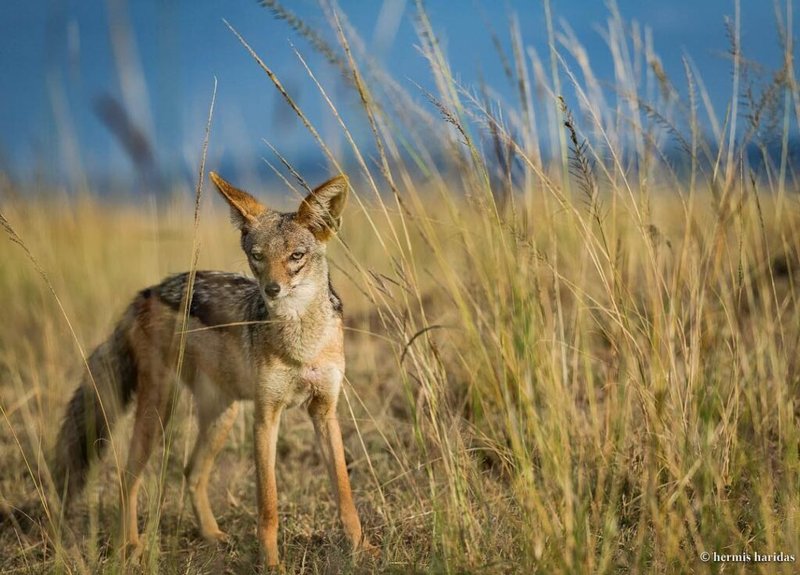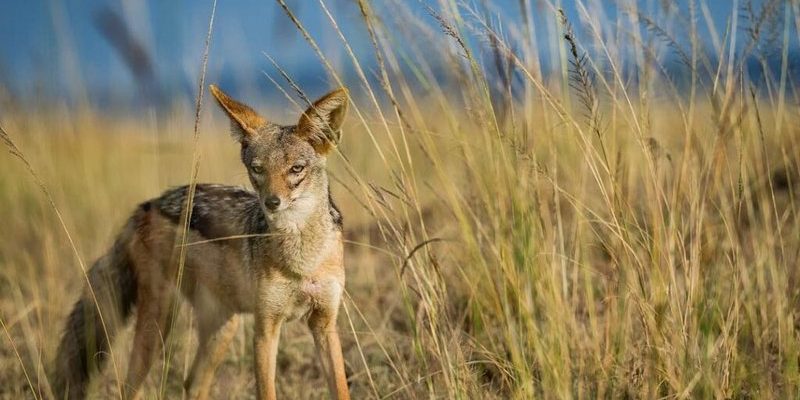
The black-backed jackal, found primarily in southern and eastern Africa, is fascinating. With its sleek body, a distinctive black stripe down its back, and a clever personality, this animal intrigues many. But here’s the crux: you might be wondering if this clever jackal is endangered. Let’s dive into the current conservation status of the black-backed jackal and explore why understanding its situation is essential for the health of its habitat and beyond.
What is the Black-Backed Jackal?
The black-backed jackal, scientifically known as *Canis mesomelas*, is a small to medium-sized canid that primarily inhabits savannas, grasslands, and arid regions of Africa. Unlike its larger relatives like the wolf, this jackal thrives in diverse environments and is known for its adaptability. It has a bushy tail, pointed ears, and a remarkable coat that helps it blend into the brush.
You might be surprised to learn that these jackals are more than just scavengers. They are also skilled hunters, often preying on small mammals, birds, and insects. Their diet varies, making them quite resourceful. In many ways, they are nature’s cleanup crew, helping to control populations of pests and other small animals.
Their social structure is another fascinating aspect. Black-backed jackals typically live in monogamous pairs, raising their young together after breeding. This tight-knit family unit exemplifies teamwork, with both parents sharing the responsibility of hunting and caring for their pups. Imagine a small, efficient family business, where everyone has their role, ensuring the group’s survival.
The Conservation Status of the Black-Backed Jackal
Now, let’s get to the heart of the matter: is the black-backed jackal endangered? Currently, the International Union for Conservation of Nature (IUCN) lists the black-backed jackal as Least Concern. This means, for now, they aren’t facing immediate threats of extinction. But, here’s the thing: “Least Concern” doesn’t mean these animals are free from challenges.
While their population is stable in some areas, they face significant threats in others. Habitat loss due to agriculture, urban development, and human-wildlife conflict are major concerns. In regions where humans encroach on their territory, black-backed jackals can find themselves in perilous situations, especially if they are seen as pests.
You might also be curious about how conservationists are monitoring their numbers. Researchers use various methods, like tracking their movements with GPS collars and using camera traps, to gather data. This helps them understand population dynamics and develop strategies to protect these clever canids.
Threats to the Black-Backed Jackal
Several factors pose challenges to the black-backed jackal’s survival. One of the primary threats is habitat loss. As more land is converted for agriculture and urban development, these jackals lose the places they call home. Imagine having to move away from your favorite coffee shop every few months; it would be frustrating and stressful!
Another issue is human-wildlife conflict. When jackals venture into livestock areas in search of food, farmers may see them as a threat. Unfortunately, this can lead to retaliatory killings. It’s a tough situation: farmers are trying to protect their livelihood, while the jackals are just looking for a meal.
Additionally, diseases can also impact black-backed jackal populations. Canine distemper and rabies are two significant diseases that can spread quickly among wildlife. If an outbreak occurs, it can drastically reduce numbers and disrupt delicate family structures.
Conservation Efforts for Black-Backed Jackals
Luckily, there are ongoing conservation efforts aimed at protecting black-backed jackals and their habitats. Many wildlife organizations have recognized the importance of these animals and are working to create a safer environment for them.
For instance, creating wildlife corridors can help connect fragmented habitats, allowing jackals to roam freely and access food and mates. Think of it like building a highway for wildlife—making it easier for them to travel without running into too many human obstacles.
Education plays a critical role, too. Many groups promote coexistence strategies, teaching farmers about non-lethal methods to protect livestock. By advocating for practices like using guard animals or building predator-proof enclosures, farmers can safeguard their livelihoods while also protecting local jackal populations.
Research is also a key element of conservation. By studying the black-backed jackal’s behavior, diet, and habitat needs, scientists can formulate more effective conservation strategies. This knowledge helps ensure that policies are in place to protect this species in the long term.
Why Should We Care?
You might be asking yourself, “Why should I care about the black-backed jackal?” Well, the truth is, every species plays a role in its ecosystem. Black-backed jackals help control populations of rodents and insects, which can prevent overgrazing and damage to plant life. Their presence indicates a healthy ecosystem.
Moreover, protecting these jackals contributes to the overall biodiversity of the areas they inhabit. Biodiversity is crucial for ecosystem resilience; the more varied the life around us, the stronger it becomes against changes and threats.
Conservation of the black-backed jackal also ties into larger conservation efforts. Protecting their habitats can benefit other wildlife species and improve the quality of life for nearby human populations. It’s a win-win situation: a healthy ecosystem supports both wildlife and humans.
How Can You Help?
You might be wondering how you can make a difference. Thankfully, there are steps you can take to contribute to the conservation of the black-backed jackal and other wildlife.
– Support Conservation Organizations: Many nonprofits focus on wildlife preservation. Donations can help fund crucial research and habitat conservation.
– Educate Yourself and Others: The more you know about the black-backed jackal and its role in the ecosystem, the better equipped you’ll be to spread awareness.
– Practice Responsible Tourism: If you visit areas where black-backed jackals live, choose eco-friendly tours that promote conservation and respect for wildlife.
– Advocate for Wildlife Protection: Contact local representatives to support policies aimed at protecting wildlife habitats and funding conservation initiatives.
By taking these simple actions, you can contribute to the ongoing conservation of black-backed jackals and help ensure that future generations can appreciate these amazing creatures.
The black-backed jackal might not be the most famous animal out there, but it plays a critical role in its ecosystem. While its current conservation status is of Least Concern, it still faces numerous threats that require our attention. Understanding and supporting efforts to protect this clever canid is essential for maintaining biodiversity and ecological balance.
Ultimately, the fate of the black-backed jackal is intertwined with the health of its habitat and the actions we take. So, let’s make sure we’re doing our part to protect not just the black-backed jackal, but the entire tapestry of life they represent. After all, a thriving world is one where all creatures, big and small, can coexist harmoniously.

